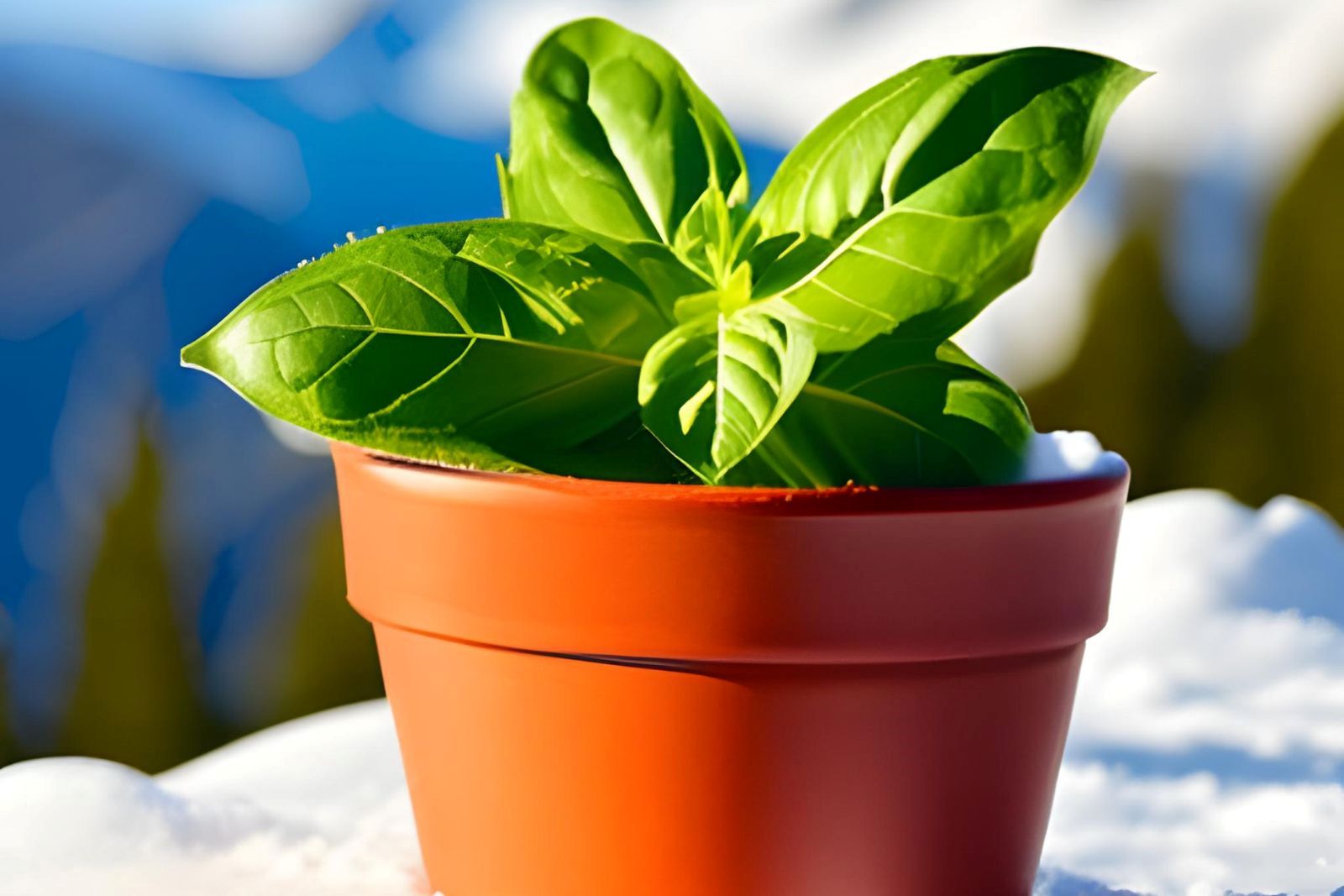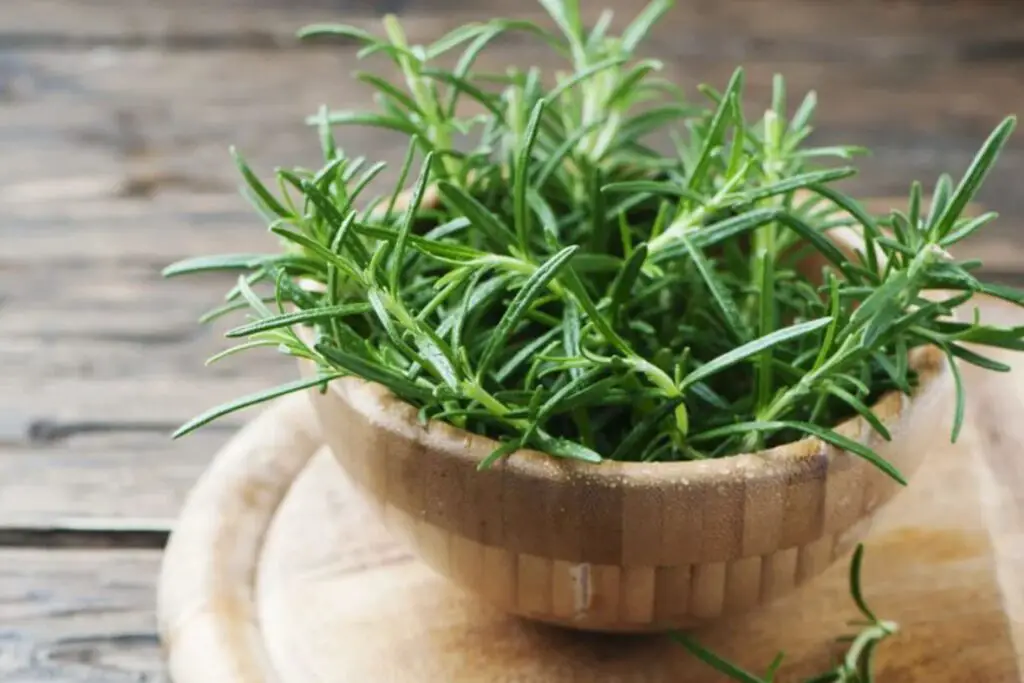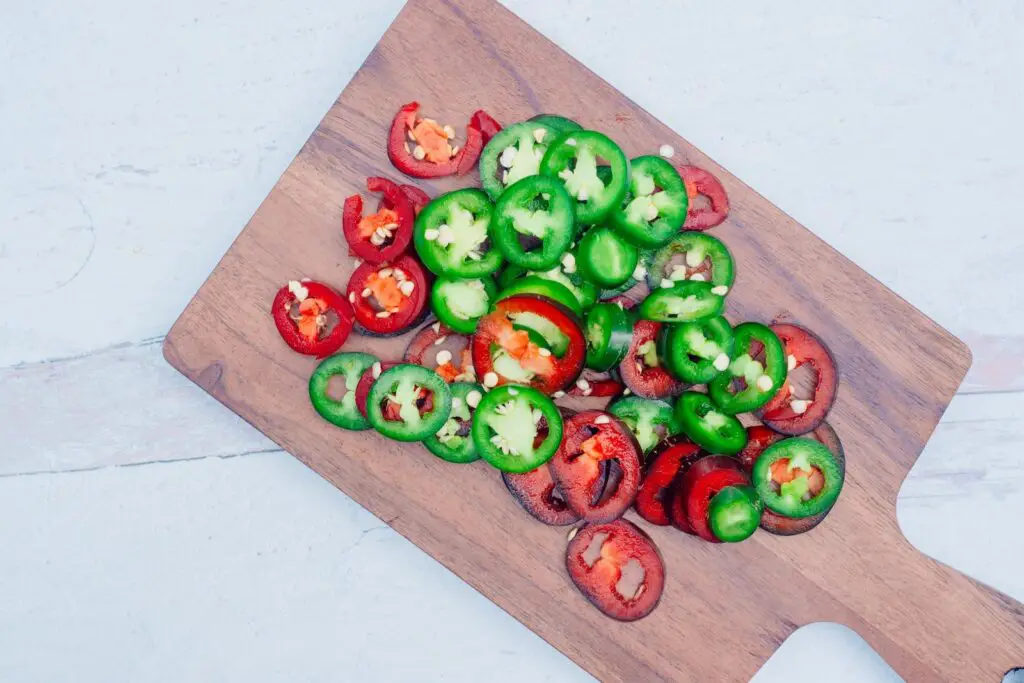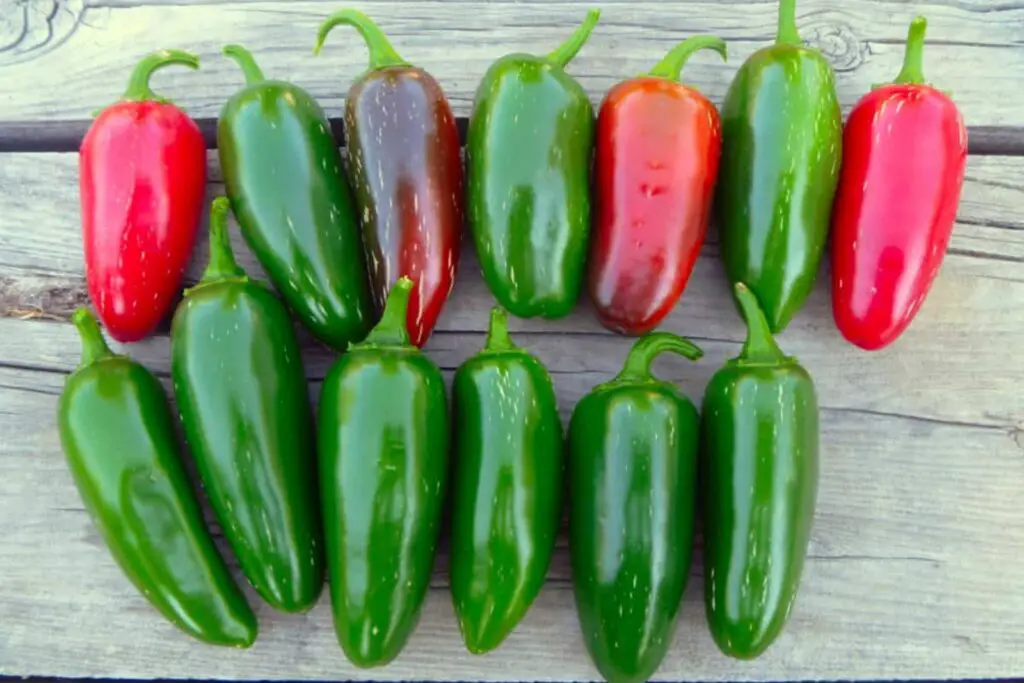
Basil is a fragrant herb widely used in various cuisines around the world, known for its distinctive aroma and flavor. Whether you have a surplus of fresh basil from your garden or want to preserve its vibrant taste for future use, freezing basil is an excellent option. Freezing basil allows you to extend its shelf life while maintaining its fresh and aromatic qualities. By properly preparing and storing basil, you can have a ready supply of this versatile herb to enhance your favorite dishes, such as pasta sauces, salads, and soups, even during the off-season. With frozen basil at hand, you can enjoy the delightful taste and aroma of this herb all year round, adding a burst of freshness to your culinary creations.
Here are the simple steps to freeze basil:
Step 1: Harvest and clean the basil leaves
When it comes to freezing basil, the first step is to gather fresh basil leaves either from your own garden or by purchasing them from the store. Harvesting basil from your garden allows you to ensure its freshness and quality. If you’re purchasing basil, look for vibrant green leaves that are free from any wilting or discoloration.
Once you have your basil leaves, it’s important to give them a gentle cleaning. This step helps remove any dirt, insects, or other debris that may be present on the leaves. Cleaning the basil leaves not only ensures their cleanliness but also helps maintain their flavor and integrity during the freezing process.
To clean the basil leaves, start by filling a bowl or basin with cool water. Submerge the leaves in the water and gently swish them around to dislodge any dirt or particles. You can also lightly rub the leaves between your fingers to remove any stubborn debris.
After rinsing the leaves, carefully lift them out of the water, being mindful not to disturb any settled dirt at the bottom of the bowl. Place the rinsed leaves on a clean kitchen towel or paper towels to dry. Pat them gently to absorb any excess moisture, taking care not to bruise or damage the delicate leaves.
Drying the basil leaves is crucial before freezing because excess moisture can lead to the formation of ice crystals, which can affect the quality and texture of the frozen basil. It’s important to ensure the leaves are completely dry to maintain their flavor and prevent them from sticking together during the freezing process.
Step 2: Blanch the basil leaves
Blanching basil is an essential step in the freezing process as it helps preserve the herb’s vibrant green color and aromatic flavor. Blanching involves briefly immersing the basil leaves in boiling water followed by an immediate transfer to an ice bath to halt the cooking process.
To begin, fill a pot with water and bring it to a rolling boil. While the water is heating, prepare an ice bath by filling a bowl with cold water and adding a generous amount of ice cubes. The ice bath serves as a rapid cooling agent for the basil leaves once they are blanched.
Carefully place the basil leaves into the boiling water. It’s important to handle the leaves gently to prevent bruising or tearing. Let the leaves blanch in the boiling water for a brief period, typically around 2 seconds. Blanching for a short time is sufficient to achieve the desired preservation effects without overcooking the basil.
After blanching, immediately transfer the basil leaves from the boiling water to the ice bath. This rapid cooling process shocks the leaves, effectively stopping the cooking process. Plunging the leaves into the ice bath helps preserve their vibrant green color, texture, and aroma by halting enzymatic reactions that can cause deterioration.
Allow the basil leaves to sit in the ice bath for a few moments until they are completely cooled. This ensures that any residual heat is dissipated, and the leaves retain their freshness. Once the basil leaves have cooled, carefully remove them from the ice bath and gently pat them dry using a clean kitchen towel or paper towels.
Does blanching basil affect the taste?
Blanching basil can have a minimal effect on its taste. The blanching process is quick, usually lasting only a few seconds, which helps to preserve the herb’s natural flavor. While blanching can slightly alter the taste, it is generally subtle and does not significantly compromise the overall flavor profile of basil.
Does basil need to be blanched before freezing?
Blanching basil before freezing is not necessary, but it can help preserve its color and flavor. Blanching involves briefly immersing basil leaves in boiling water followed by an ice bath to halt the cooking process. This step can help deactivate enzymes that can cause the basil to deteriorate during freezing, resulting in better texture and color retention. However, blanching is optional, and basil can still be frozen successfully without this step.
Step 3: Drain and dry the basil leaves
After blanching the basil leaves and cooling them in the ice bath, it’s crucial to drain and thoroughly dry them before freezing. Properly draining and drying the basil leaves helps prevent the formation of ice crystals during freezing, which can negatively affect their texture and quality.
To begin, remove the basil leaves from the ice bath, taking care not to squeeze or crush them. Gently lift the leaves out of the water and allow any excess water to drain off naturally. You can hold the leaves over the ice bath or a colander to let the water drip away.
Once the leaves have been drained, it’s important to ensure they are completely dry. Excess moisture can lead to the development of ice crystals when the basil leaves are frozen. These ice crystals can damage the structure of the leaves and result in a loss of flavor and texture.
To dry the basil leaves, place them on a clean kitchen towel or layer of paper towels. Gently pat the leaves dry using the towels, absorbing any remaining moisture. Be careful not to rub or press too hard, as this can bruise or damage the delicate leaves.
Allow the basil leaves to air-dry for a few minutes to ensure they are fully dry before proceeding to the next step. The leaves should feel dry to the touch and not have any visible moisture on their surfaces.
Step 4: Flash-freeze the basil leaves
Flash-freezing the basil leaves is an important step in the freezing process that helps prevent them from sticking together and allows for easier portioning later on. Flash-freezing involves quickly freezing the leaves in a single layer on a baking sheet before transferring them to storage containers. This method helps maintain the individual integrity of the basil leaves during freezing.
To begin, prepare a baking sheet by lining it with parchment paper or a silicone mat. This prevents the basil leaves from sticking to the surface and makes it easier to remove them once frozen. Make sure the baking sheet fits comfortably in your freezer.
Take the drained and dried basil leaves and arrange them in a single layer on the prepared baking sheet. Make sure the leaves are not touching each other, allowing for even freezing and easy separation later on. If necessary, use multiple baking sheets to accommodate all the basil leaves.
Place the baking sheet with the basil leaves in the freezer. It’s important to have a freezer that maintains a consistently low temperature for optimal freezing. Let the basil leaves freeze for approximately 1 to 2 hours, or until they are firm and completely frozen. The exact freezing time may vary depending on the freezer temperature and the thickness of the basil leaves.
Flash-freezing the basil leaves individually on the baking sheet helps prevent them from clumping together. This allows you to easily remove the desired amount of basil leaves when needed, without having to thaw the entire batch. The frozen basil leaves will maintain their individual form and can be easily portioned or added to recipes without the need to thaw them completely.
Is it better to freeze basil in water or olive oil?
When freezing basil, the preferred method is to freeze it in olive oil rather than water. Freezing basil in water can cause the leaves to become mushy and lose their flavor and texture. Freezing basil in olive oil helps preserve its flavor and aroma while also providing a convenient way to store and use the herb in various dishes.
How to freeze basil in olive oil?
To freeze basil in olive oil, start by washing and drying the basil leaves thoroughly. Place a small amount of basil in each compartment of an ice cube tray, then pour olive oil over the leaves, ensuring they are fully submerged. Freeze the tray until the oil solidifies, then transfer the basil-infused olive oil cubes into a freezer-safe container or bag, making sure to remove excess air. This method preserves the flavor and aroma of basil, allowing you to conveniently add it to your recipes in measured portions straight from the freezer.
Step 5: Transfer to freezer-safe containers or bags
After flash-freezing the basil leaves on the baking sheet, it’s time to transfer them to freezer-safe containers or bags for long-term storage. This step is crucial in maintaining the quality, flavor, and aroma of the basil leaves while preventing freezer burn.
Quickly remove the frozen basil leaves from the baking sheet, ensuring they remain as cold as possible. Freezer-safe containers with airtight seals or freezer bags with reliable closures are ideal for preserving the basil leaves’ freshness.
If using containers, place the frozen basil leaves inside, taking care not to overcrowd them. Leave a bit of headspace at the top of the container to allow for any expansion that may occur during freezing. This extra room helps prevent the containers from breaking or cracking under pressure.
If using freezer bags, carefully transfer the frozen basil leaves into the bags. Arrange them in a single layer and avoid overcrowding. It’s essential to remove as much air as possible from the bags before sealing them tightly. Squeezing out the excess air helps minimize the exposure of the basil leaves to oxygen, which can lead to freezer burn and deterioration of quality.
Seal the containers or bags securely, ensuring they are airtight to prevent air and moisture from entering. This step is vital in preserving the flavor, color, and texture of the basil leaves during storage.
Proper packaging and sealing in freezer-safe containers or bags create a protective barrier against freezer burn. Freezer burn occurs when moisture evaporates from the food, leaving it dehydrated and causing a change in taste and texture. By removing air and providing airtight storage, you significantly reduce the chances of freezer burn, ensuring that the basil leaves remain flavorful and of high quality.
Step 6: Label and date the containers or bags
Labeling and dating the containers or bags of frozen basil is an essential step in the freezing process. By clearly marking the freezing date, you can keep track of the basil’s storage time and ensure its freshness and quality when it’s time to use it.
Using a permanent marker or labels, write the current date on each container or bag that holds the frozen basil. Make sure the date is visible and easy to read. This simple step helps you establish a system for rotating and using the basil in a timely manner.
Labeling the containers or bags with the date serves as a reminder of when the basil was frozen. It allows you to adhere to the recommended storage time for frozen basil, typically up to six months, without compromising its flavor or quality. This ensures that you utilize the basil while it is still at its best and minimize the risk of using it past its prime.
Additionally, the labeled containers or bags make it easy to identify the frozen basil in your freezer. When you have multiple items stored, the labels help you locate and access the basil quickly without needing to thaw other items unnecessarily.
Step 7: Store the frozen basil
After labeling and dating the containers or bags of frozen basil, it’s time to store them in the freezer. Proper storage plays a crucial role in maintaining the flavor, aroma, and quality of the basil leaves over an extended period.
Find a suitable space in your freezer to store the labeled containers or bags of frozen basil. Ideally, choose a part of the freezer where the temperature remains consistently low. Fluctuating temperatures can negatively affect the basil’s quality, so it’s important to avoid areas near the freezer door or where warm air may enter frequently.
Ensure that the containers or bags are placed in a way that allows for proper air circulation within the freezer. Avoid overcrowding and allow space between items to promote efficient freezing and maintain a steady temperature throughout.
Regularly monitoring the temperature of your freezer is also important to maintain optimal conditions for frozen foods. Make sure your freezer maintains a consistent temperature of 0°F (-18°C) or below to prevent thawing and refreezing, which can affect the texture and quality of the basil leaves.
When you’re ready to use the frozen basil, simply remove the desired amount from the freezer and reseal the remaining portion promptly. This way, you can maintain the quality of the basil and enjoy its fresh flavors in your dishes.
Other related questions?
How long can basil last in the freezer?
Basil can last in the freezer for up to six months while maintaining its flavor and quality. Properly stored frozen basil can retain its taste and aroma for an extended period. It is recommended to use the frozen basil within this timeframe for the best results.
How do you defrost basil?
To defrost basil, remove the desired amount from the freezer and place it in the refrigerator. Allow the basil to thaw slowly in the fridge for several hours or overnight. Once thawed, gently pat dry any excess moisture before using the basil in your recipes.
Can you refreeze basil?
It is generally not recommended to refreeze basil once it has been thawed. Freezing and thawing can affect the texture and quality of basil, and repeated freezing and thawing can further degrade its flavor and aroma. It is best to use the thawed basil promptly to ensure optimal taste and quality.
How do I know if the basil has gone bad after being frozen?
To determine if frozen basil has gone bad, examine its appearance, smell, and texture. If the basil leaves appear discolored, wilted, or have developed freezer burn, it is likely spoiled. A foul or off-putting odor and a slimy or mushy texture are also signs of deterioration. Trust your senses and discard any frozen basil that shows these signs of spoilage to ensure food safety.
Is it better to freeze basil or dry it?
The choice between freezing basil or drying it depends on personal preference and intended use. Freezing basil preserves its fresh flavor, vibrant color, and aroma, making it ideal for recipes that require the herb’s characteristic taste. On the other hand, drying basil concentrates its flavor and allows for longer storage, making it suitable for situations where the herb will be used in smaller quantities or over an extended period. Consider the intended use and desired outcome to determine whether freezing or drying is the better option for your needs.
Can I freeze sliced basil?
Yes, you can freeze sliced basil. Slicing basil before freezing can make it more convenient to use in recipes. Ensure the basil leaves are clean and dry, then slice them into desired sizes. Flash-freeze the sliced basil on a baking sheet, and once frozen, transfer them to airtight freezer-safe containers or bags for long-term storage in the freezer.
Can I freeze basil in portions for easy measurement?
Yes, freezing basil in portions is a convenient way to have the right amount readily available. You can either chop the basil leaves or freeze them as whole leaves and portion them into ice cube trays or small freezer-safe containers. This allows you to easily measure out the desired amount of basil for your recipes without the need to thaw the entire batch.
How can I use frozen basil in recipes?
Frozen basil can be used in various recipes. It’s best to add frozen basil directly to cooked dishes or recipes with some liquid, as the freezing process can affect the texture of the leaves. Basil is commonly used in soups, stews, sauces, pesto, and marinades. Remember to adjust the amount of frozen basil based on your taste preferences.








